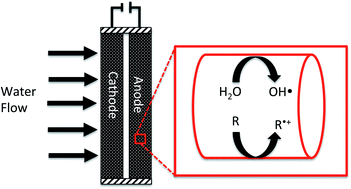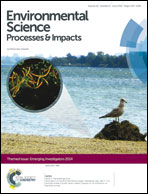Critical review of electrochemical advanced oxidation processes for water treatment applications
Abstract
Electrochemical advanced oxidation processes (EAOPs) have emerged as novel water treatment technologies for the elimination of a broad-range of organic contaminants. Considerable validation of this technology has been performed at both the bench-scale and pilot-scale, which has been facilitated by the development of stable electrode materials that efficiently generate high yields of hydroxyl radicals (OH˙) (e.g., boron-doped diamond (BDD), doped-SnO2, PbO2, and substoichiometic- and doped-TiO2). Although a promising new technology, the mechanisms involved in the oxidation of organic compounds during EAOPs and the corresponding environmental impacts of their use have not been fully addressed. In order to unify the state of knowledge, identify research gaps, and stimulate new research in these areas, this review critically analyses published research pertaining to EAOPs. Specific topics covered in this review include (1) EAOP electrode types, (2) oxidation pathways of select classes of contaminants, (3) rate limitations in applied settings, and (4) long-term sustainability. Key challenges facing EAOP technologies are related to toxic byproduct formation (e.g., ClO4− and halogenated organic compounds) and low electro-active surface areas. These challenges must be addressed in future research in order for EAOPs to realize their full potential for water treatment.


 Please wait while we load your content...
Please wait while we load your content...